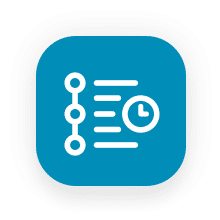Use Case: Why use electronic catalogs over print catalogs?

Use Case: Why use electronic catalogs over print catalogs?
Print catalogs, magazines or brochures are still in demand and can have many advantages. Your customers might require them from you, and it is something that does not get lost in mountains of data we produce and receive nowadays, unless of course it lands in the trash. As an experienced driver of digital transformation, we want to provide you with a few reasons why a multi-channel approach to catalog production can benifit by taking digital catalogs into account.

Time
Marketing and creative teams spend weeks and sometimes months producing print catalogs. The proofing and approval process takes a lot of time into account whereas electronic catalogs can be set up in a few minutes. Electronic catalogs can be checked for errors in seconds and edited with ease.

Cost
Marketing and sales teams around the world are spending millions on printing catalogs each year. Not only the countless hours in review and approval add up cost quickly but running a high-quality print campaign can get expensive. Additional mailing costs are also due. Electonic catalogs are not labor intensive and can be created within minutes. The catalogs are reusable and can be sent out via email or filesharing services at no extra charge.

Flexibility
Going through a magazine can be nostalgic, pages of products with powerful pictures can be nice but that’s where advantages of this format end. Electronic catalogs give you the ability to export, import, classify, convert, or even include files like images, video links, CAD files or other URLs in your catalogs and provide your customers or merchants broad and comprehensive product information.
Another argument might be that print catalogs cater to all clients at once and there is a single version. By using electronic catalogs it allows you to create specific assortments or even prices tailored to each customer.
If you have frequent changes in your product portfolio, these can be made with ease.

Usability
We already mentioned it above: print catalog result in a so called “media break” and techniques like using QR codes to integrate with an order system are only a band-aid or qiuck fix: other than that, it is pretty much a dead end. Electronic catalogs can be further processed by many systems, for example transmitted to procurement or sales, ingested directly to your ERP, or used to drive online offers, generate invoices and delivery receipts, and much more.
Are you only creating print catalogs and you want to learn more about electronic catalog processes? Our experts are happy to help!
Print catalogs, magazines or brochures are still in demand and can have many advantages. Your customers might require them from you, and it is something that does not get lost in mountains of data we produce and receive nowadays, unless of course it lands in the trash. As an experienced driver of digital transformation, we want to provide you with a few reasons why a multi-channel approach to catalog production can benifit by taking digital catalogs into account.

Time
Marketing and creative teams spend weeks and sometimes months producing print catalogs. The proofing and approval process takes a lot of time into account whereas electronic catalogs can be set up in a few minutes. Electronic catalogs can be checked for errors in seconds and edited with ease.

Cost
Marketing and sales teams around the world are spending millions on printing catalogs each year. Not only the countless hours in review and approval add up cost quickly but running a high-quality print campaign can get expensive. Additional mailing costs are also due. Electonic catalogs are not labor intensive and can be created within minutes. The catalogs are reusable and can be sent out via email or filesharing services at no extra charge.

Flexibility
Going through a magazine can be nostalgic, pages of products with powerful pictures can be nice but that’s where advantages of this format end. Electronic catalogs give you the ability to export, import, classify, convert, or even include files like images, video links, CAD files or other URLs in your catalogs and provide your customers or merchants broad and comprehensive product information.
Another argument might be that print catalogs cater to all clients at once and there is a single version. By using electronic catalogs it allows you to create specific assortments or even prices tailored to each customer.
If you have frequent changes in your product portfolio, these can be made with ease.

Usability
We already mentioned it above: print catalog result in a so called “media break” and techniques like using QR codes to integrate with an order system are only a band-aid or qiuck fix: other than that, it is pretty much a dead end. Electronic catalogs can be further processed by many systems, for example transmitted to procurement or sales, ingested directly to your ERP, or used to drive online offers, generate invoices and delivery receipts, and much more.
Are you only creating print catalogs and you want to learn more about electronic catalog processes? Our experts are happy to help!

 Deutsch
Deutsch Deutsch (CH)
Deutsch (CH)